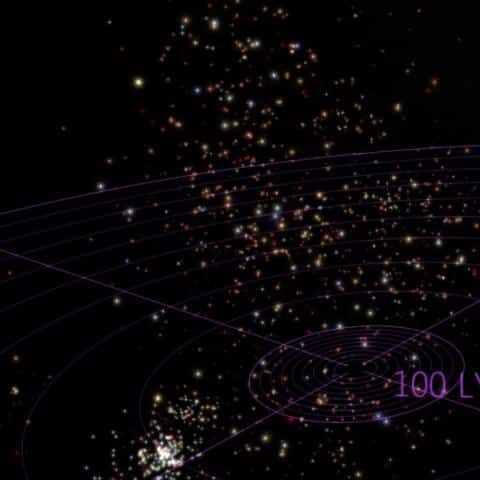Researchers who scanned the observational data of the European Gaia spacecraft were able to classify red dwarfs moving in our region of the Milky Way galaxy into groups or groups of stars of similar age and composition that move together in the sky. This will help in understanding the evolution of solar systems

A new study by Jonathan Gangé (Gagné) from the Carnegie Institution and Jacqueline Faherty from the Museum of Natural History in New York identified close to a thousand potential friends, and 31 happy ones in groups or swarms of stars - stars of similar age and composition drifting together in our corner of the Milky Way. The research published in the Astrophysical Journal could help astronomers understand the evolution of stars, for use in the study of planets outside the solar system.
"Like a flock of birds flying together in the sky, the common speed of stars in a group can testify to their connection." Ganga explained. "This teaches us something about their age and composition."
Thanks to the similarity between the members of the group and the difference between them and stars from different groups, and especially the age differences, astronomers can use the groups of stars to gather information about the history of star formation in the corner of our Milky Way. The age range is huge. There are bands of young stars that are a few million years old and there are even bands of stars that are a billion years old or more.
The researchers scanned XNUMXD mapping data from the European Gaia spacecraft published earlier this year and discovered this gold mine there.
"Our sample consists mainly of red dwarfs - stars much smaller than our Sun and relatively cold," said Ganga. "Due to their size, it is difficult to observe them even though we know that they are very common in the galaxy, so the Gaia data is a great bargain."
The insights that the researchers produced from the study of these stars could help in understanding the processes of the formation of planets around the stars that are members of these bands in future space missions, such as TESS, which are designed to discover planets outside the solar system. The information we gathered about their ages based on their membership in one of these bands could teach us a lot about the evolution of planetary systems at different points in time, Faherty added.
In addition to the abundance of red dwarfs in neighboring star clusters, the two discovered 111 brown dwarfs, also known as failed or super-righteous planets. They are smaller than stars and therefore unable to sustain the hydrogen fusion process but are more massive than giant planets. As such they provide a natural link between astronomy and the planetary sciences and cause great interest among scientists.
For a message from the Carnegie Institute
More of the topic in Hayadan:
